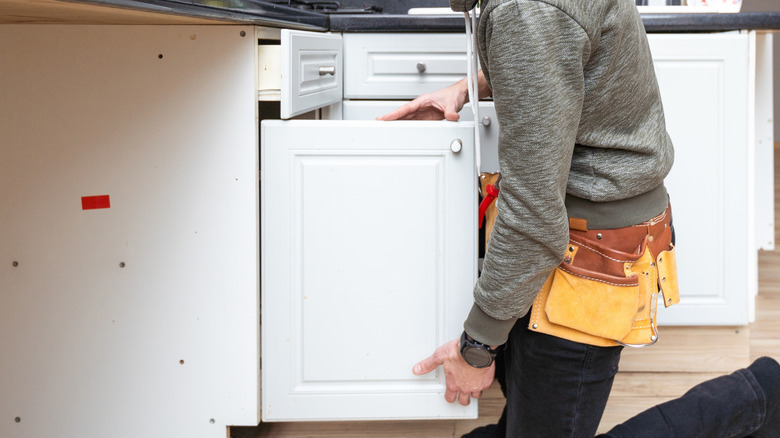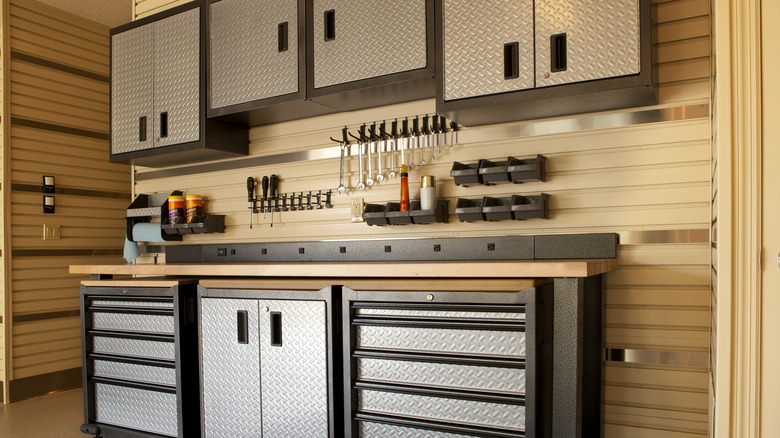Don't Make These Mistakes When Adding Cabinets To Your Garage
Whether you use it for storage, as a workshop, or both, adding cabinets is one of a number of budget-friendly ideas to organize your garage. However, there are some important decisions to be made when choosing garage cabinets, and getting it wrong could cost you time, effort, and money.
There are a number of key issues to think about. High humidity combined with fluctuations in temperature can wreak havoc with wooden cabinets. On the other hand, if you already control the environment, or you intend to, that may not be a problem. Building your own cabinets can be a cost-effective approach, and there are plenty of garage storage designs to inspire the handyperson in you, but do you have the time and skills to achieve what you need? Store-bought plastic or steel cabinets could be a durable alternative and might look great, but not all of them are built to the same standard. So knowing exactly what to look for is vital if you want to get the best bang for your buck.
Taking a DIY approach to garage cabinets
It's not difficult to find plans for all kinds of garage storage cabinets, and if you have the tools and the skills, it can be very rewarding to build a bespoke system. It's also possible to repurpose old kitchen cabinets as a reliable storage solution. Interestingly, this is one occasion when cheaper materials like plywood and other man-made boards are more suitable than solid wood because they are more resistant to temperature fluctuations. However, in a drafty, unheated garage, dampness is still likely to be an issue, warping and weakening the material and allowing mold to take hold. You can change that and make it a much more comfortable place to spend time by choosing the right type of insulation for your garage, although if you only use it for storage, you might not want to make the extra investment.
Other considerations are strength and security. Old kitchen cabinets might be fine for pots and pans, but will they take heavy tools, large cans of paint, etc.? You may want to think about reinforcing them. If you're keeping chemicals or anything flammable in the garage, will you need to lock cabinets to keep out inquisitive young fingers? Then there's the durability question. Stuff can get tossed around the garage without a great deal of care sometimes. Your DIY garage cabinets or salvaged kitchen units may look great when they're first installed, but will they put up with mistreatment in the long term?
Investing in store-bought garage cabinets
Strength might also be an issue with store-bought garage cabinets. If you're going to cram them full of tools, materials, and all those things you don't want to throw out because you know they will come in useful someday, they need to offer plenty of support. Plastic cabinets might look the part but may not have the necessary toughness.
One of the top choices for garage cabinets is invariably steel. However, construction standards can vary considerably. You'll often see cabinets described as 'heavy-duty' but it doesn't really mean anything. Instead, check the gauge (thickness) of the steel used. 24 gauge is okay, but a lower number means thicker steel, and some of the best garage cabinets according to reviews are 20 gauge. Good garage cabinets usually provide load ratings, i.e., how much weight each shelf and drawer can support. Also, look for welded seams rather than pressed steel and piano hinges (ones that run the full length of the doors). High-quality steel garage cabinets are without doubt the most expensive option but are usually worth the investment.


